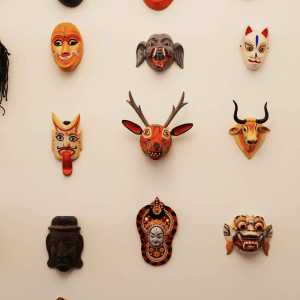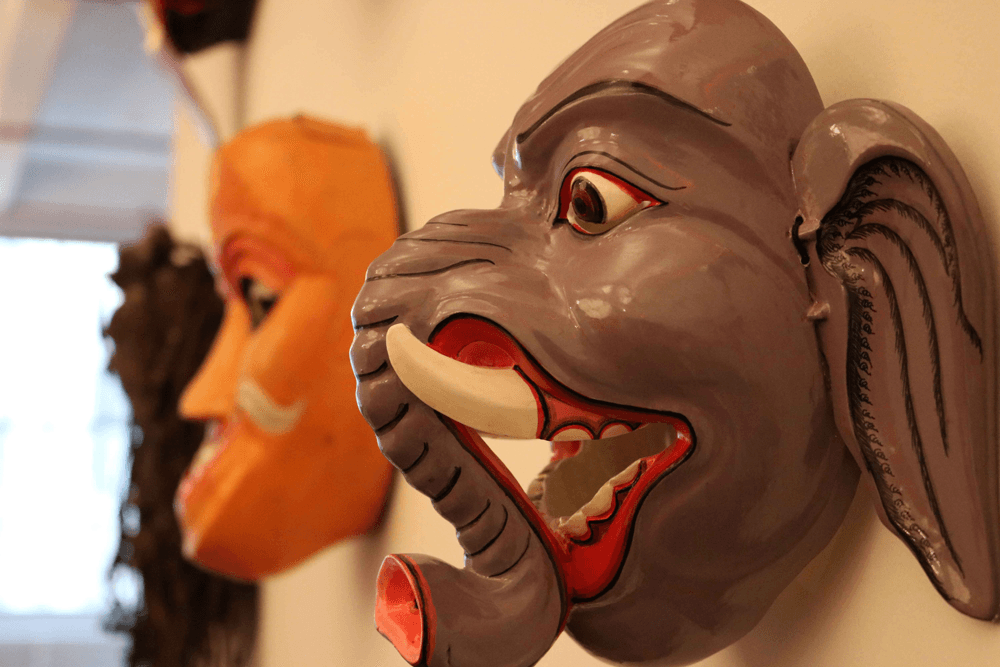
Why are there so many masks at TK Studio?

Terry Knickerbocker talks about the significance of masks for the actor, as well as their role in the studio.
How does your mask collection relate to your travels and personal endeavors?
Some of it relates to my travel, some of it doesn’t. I like to collect old, ritual objects and rustic types of things. I’ve gotten a lot of masks from a particular place in India called Varanasi. It’s the oldest continuously lived in civilization in the world. It’s about 5000 years old, older than Jerusualam, older than Athens, and Cairo.
They annually host a performance called the Ramlila, where for 12 days performers put on shows and rituals with paper mache masks. I used to go to Varanasi a lot and I collected a lot of masks there. Durga, Ram, Ganesh, Lakshmi, all these major characters in the Ramlila. The Ramlila is a lot like a piece that Peter Brook did called the Mahabharata, and there are all these iconic humans and gods that are part of that. I’ve gotten some masks in Nepal. I’ve gotten some in Central America and Mexico. There are also some great shops in New York for masks!
Why did you decide to feature a mask wall in your studio?
When designing the studio, I wanted to incorporate these masks in the architecture, because we do mask work here and it’s a big part of training. Masks incorporate the idea that we have all these characters inside of us and putting on the mask helps release all those different folks that live inside us. This is helpful because actors must play many different parts. So the mask wall makes a nice symbol as well as a design motif.
I realized that I needed a lot more than what I had in my collection so I’ve begun to buy masks from this site call Novica, which sells masks from all over the world. The site is a non-profit supporter of local artisans, primarily in West Africa so I’ve gotten a lot of masks from Ghana. It feels very personal even though it is from a big website.

Do you have a favorite mask?
I love the Ganesh masks – we’ve got at least four. Ganesh is the elephant god of India and what he does for us is remove obstacles. I like elephants and I like what he looks like. I’ve also got these red masks that are wooden – that look like Popeye, these are playful demons. I have one African mask that has braided rope like dreadlocks. They are like children. Per Brahe came here to teach mask work, he’s a Danish mask master who lives in Bali has sent me a total of four masks, two of which are in the studio – one is of Hanuman the monkey god and a fifth Ganesh, a big grey one.